IB Biology SL (Standard level)- 2024 – Practice Questions- All Topics
Topic 1.2 Ultrastructure of cells
Topic 1 Weightage : 17 %
All Questions for Topic 1.2 – Prokaryotic Cell , Eukaryotic Cells , Organelles , Microscopy , Cell Micrographs, Types of Bacteria, Animal versus Plant Cells
Question
What do chloroplasts and mitochondria have in common?
Both are found in the cells of Filicinophyta.
Both contain grana.
Both occur in all eukaryotic cells.
Both are found in a Paramecium.
▶️Answer/Explanation
Ans: A
Question
What is the structure labeled X in the electron micrograph of a rat liver cell?
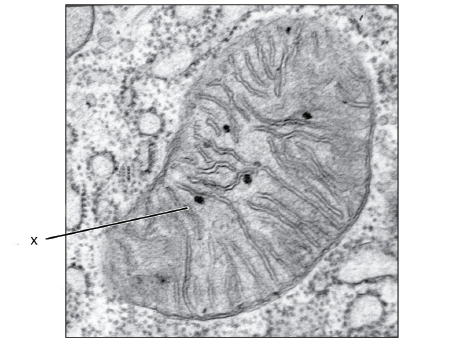
A. Ribosome
B. Lysosome
C. Mitochondrion
D. Nucleus
▶️Answer/Explanation
Markscheme
Ans:C
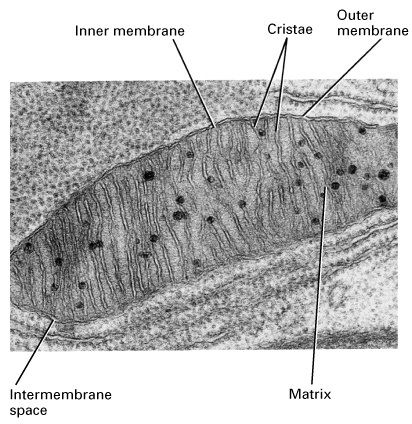
Mitochondria are organelles found in most cells that are responsible for generating energy in the form of ATP (adenosine triphosphate) through the process of oxidative phosphorylation. They are typically round to oval in shape and range in size from 0.5 to 10 μm³. Mitochondria are unlike other cellular organelles in that they have two distinct membranes and a unique genome and reproduce by binary fission; these features indicate that mitochondria share an evolutionary past with prokaryotes (single-celled organisms).
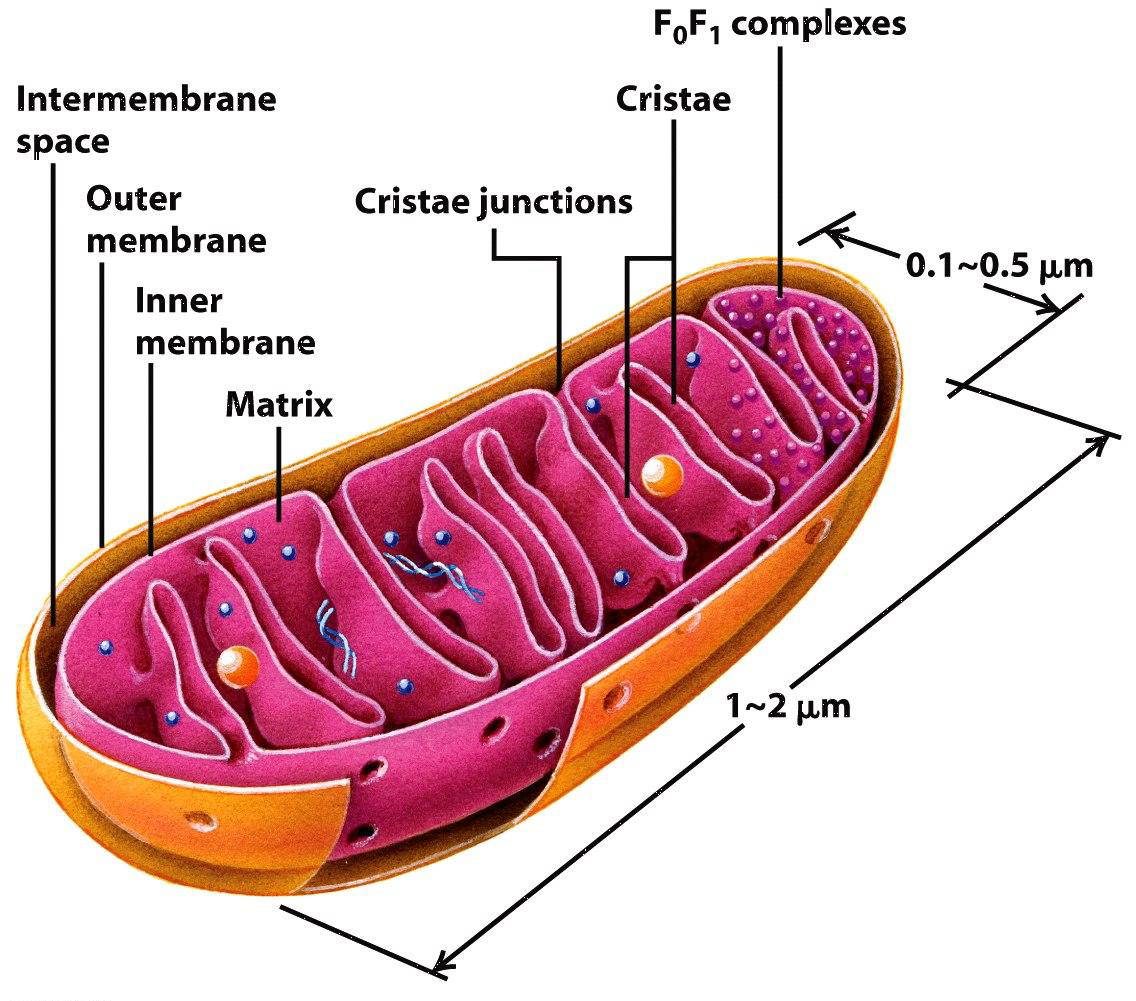
Functions. Mitochondria are sites of cellular respiration. They use molecular oxygen from air to oxidise the carbohydrates and fats (lipids) p[resent in the cell to carbon dioxide and water vapour. Oxidation releases energy, a portion of which is used to form ATP (adenosine triphosphate). Since the mitochondria synthesize, energy-rich compounds (ATP) they are known as ‘power house’ of the cell. The energy stored in ATP is used by the cell.
Question
What is a function of the plant cell wall?
A. Formation of vesicles for transport of large molecules
B. Prevention of excessive water uptake
C. Communication with other cells by means of glycoproteins
D. Active transport of ions
▶️Answer/Explanation
Markscheme
Ans:B
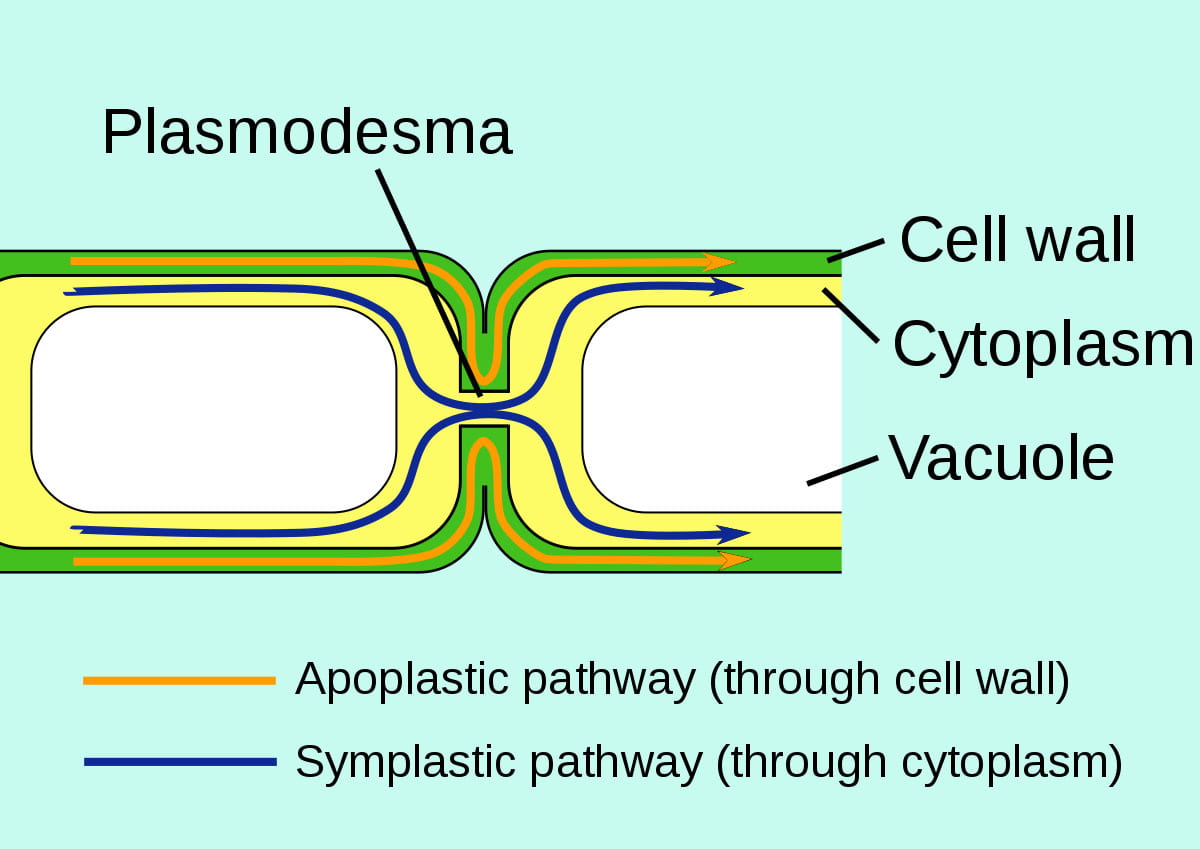
A plant cell absorbs water without bursting just because the support provided by cell wall and the membrane around the central vacuole. The cell wall is a rigid structure that surrounds the cell membrane and it prevents excessive water intake. The membrane around the central vacuole, called the tonoplast which regulates the movement of water and solutes into and out of the cell. This helps to maintain balance between the water potential inside and outside the cell by pumping ions out of the vacuole. Tonoplast and Cell wall effectivly create a pressure balance that prevents the cell from bursting, allowing the plant cells to maintain their shape and function.
Question
What distinguishes prokaryotic cells from eukaryotic cells?

▶️Answer/Explanation
Markscheme
Ans: D
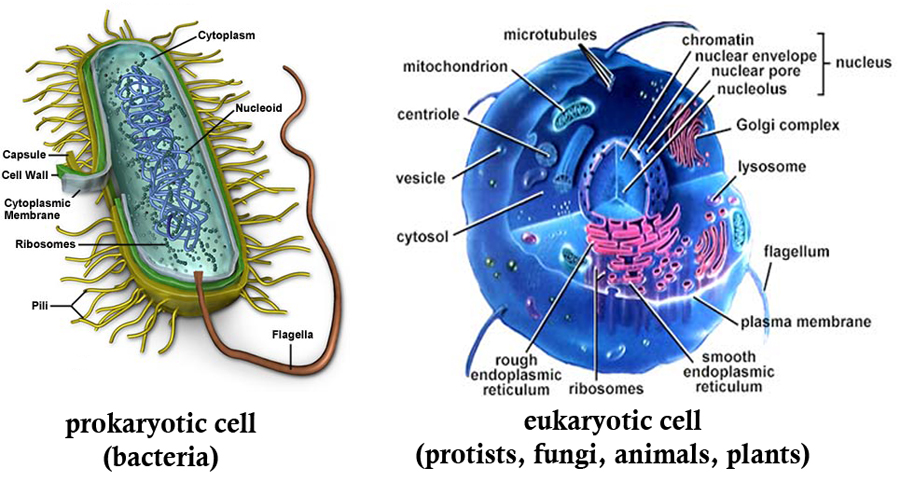
Space enclosed by membrane of a cell is called cytoplasm. Cytoplasm is the main arena of ofv all cellular activities in both the eukaryotic cell and prokaryotic cell. A eukaryotic cell’s total volume is arrenged in separate intracellular compartments called organelles. The main types of membrane-enclosed organelles present in all eucaryotic cells are the endoplasmic reticulum, Golgi apparatus, nucleus, mitochondria, lysosomes, endosomes, and peroxisomes; plant cells also contain plastids, such as chloroplasts. Whereas prokaryotic cell lacks the membrane bound organelles and thus such compartmentalisation is not seen.
Question
Animal cells often secrete glycoproteins as extracellular components. What is a role of these glycoproteins?
A. Adhesion
B. Additional energy reserve
C. Membrane fluidity
D. Water uptake
▶️/Explanation
Markscheme
A
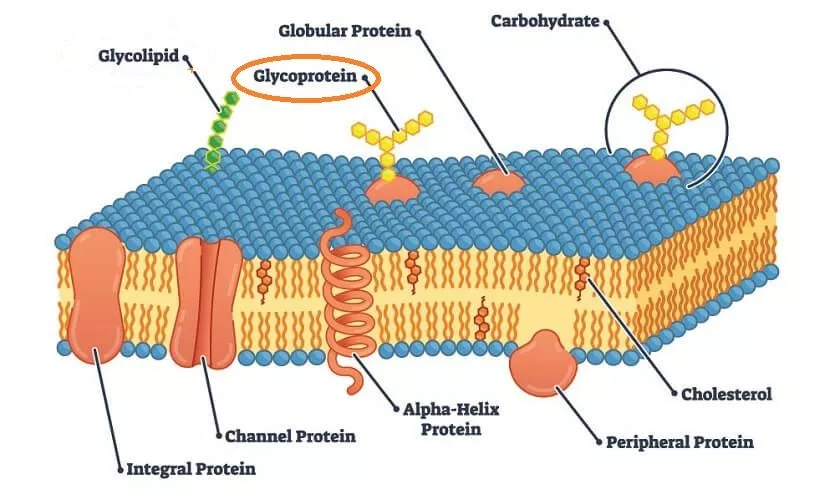
Glycoproteins are proteins that have sugars attached to them. They are important components of the extracellular matrix, which is a network of molecules that surrounds and supports cells.
Glycoproteins have various roles in the extracellular matrix, such as:
– Linking structural molecules like collagen and fibronectin to each other and to cells.
– Modulating cell adhesion and migration by binding to cell receptors.
– Participating in cell signaling and recognition by interacting with other glycoproteins or lectins.
Question
The image represents an Escherichia coli.
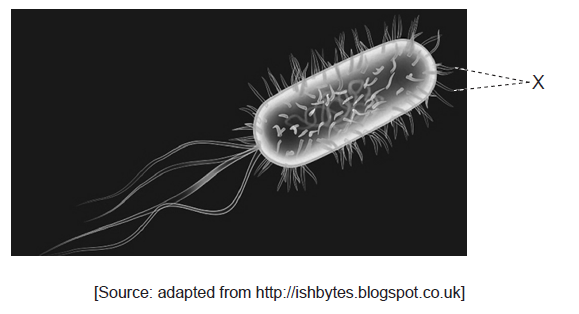
What is the function of structure X?
A. Active transport
B. Attachment
C. Binary fission
D. Cell respiration
▶️Answer/Explanation
Markscheme
B
– Adhesion/Attachment: Pili can help bacteria attach to host cells or surfaces and cause infection. These pili are also called fimbriae.
– Motility: Pili can help bacteria move by extending and retracting. These pili are also called type IV pili
Question
Which structure is found in E. coli, but not in a eukaryotic cell?
A. Cell wall
B. Endoplasmic reticulum
C. Cytoplasm
D. Pil
▶️Answer/Explanation
D
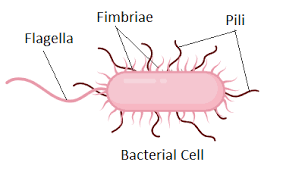
Pili are hair-like appendages that are found on the surface of many bacteria. They are composed of oligomeric pilin proteins and have different functions depending on their type.
Some of pili functions as are:
– Bacterial conjugation: Pili can transfer genetic material between bacteria by forming a mating bridge. These pili are also called sex pili or F pili.
– Adhesion: Pili can help bacteria attach to host cells or surfaces and cause infection. These pili are also called fimbriae.
– Motility: Pili can help bacteria move by extending and retracting. These pili are also called type IV pili
Question
The diagram shows a prokaryotic cell.
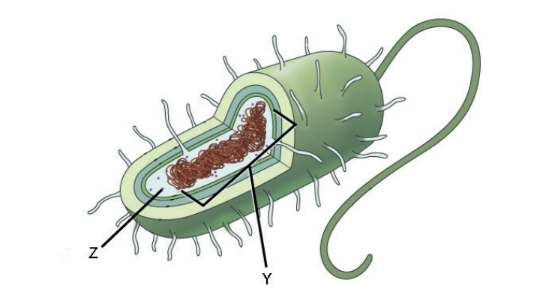
What are the structures labelled Y and Z?
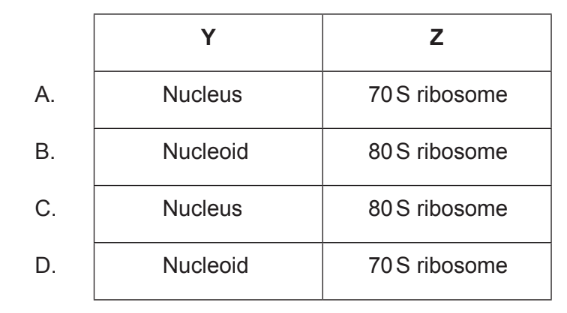
▶️Answer/Explanation
Ans:D
A nucleotide is an organic molecule that is the building block of DNA and RNA. It has three parts: a nitrogenous base, a five-carbon sugar, and a phosphate group. The nitrogenous base can be a purine (adenine or guanine) or a pyrimidine (cytosine, thymine or uracil). The sugar can be ribose (in RNA) or deoxyribose (in DNA). The phosphate group can have one, two or three phosphates attached to the sugar.
Nucleotides have many functions in living cells. They store and transmit genetic information, they provide chemical energy for cellular processes, they participate in cell signaling and enzyme reactions, and they form various coenzymes and cofactors. For example, ATP (adenosine triphosphate) is a nucleotide that acts as the energy currency of cells. NAD (nicotinamide adenine dinucleotide) and FAD (flavin adenine dinucleotide) are nucleotides that act as electron carriers in cellular respiration. cAMP (cyclic adenosine monophosphate) and cGMP (cyclic guanosine monophosphate) are nucleotides that act as second messengers in signal transduction pathways. Coenzyme A is a nucleotide that is involved in fatty acid synthesis and oxidation.
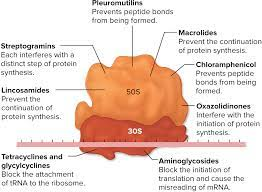
A 70S ribosome is a type of ribosome that is found in prokaryotic cells such as bacteria. It is also found in some eukaryotic cell organelles such as mitochondria and chloroplasts. A 70S ribosome consists of two subunits: a small 30S subunit and a large 50S subunit¹². The subunits are composed of ribosomal RNA (rRNA) and ribosomal proteins (RPs). A 70S ribosome has a total of 55 protein molecules and 3 molecules of RN. It has a weight of about 2.7-3.0 million Daltons and a sedimentation coefficient of 70.
A 70S ribosome is involved in the process of protein synthesis or translation³. It binds to a messenger RNA (mRNA) molecule that carries the genetic information for the protein sequence³. It also interacts with transfer RNA (tRNA) molecules that carry the corresponding amino acids to the mRNA codons. The 70S ribosome has two sites for tRNA binding: the aminoacyl site (A site) and the peptidyl site (P site). The 70S ribosome catalyzes the formation of a peptide bond between the amino acids at the P site and the A site, and then moves along the mRNA to expose a new codon at the A site⁶. This cycle repeats until the 70S ribosome reaches a stop codon on the mRNA, which signals the termination of translation.
The 70S ribosome is different from the 80S ribosome, which is found in eukaryotic cells. The 80S ribosome has a larger size and weight, and consists of a small 40S subunit and a large 60S subunit². It has more protein and RNA molecules than the 70S ribosome, and has a different RNA-to-protein ratio. The 80S ribosome also has an additional site for tRNA binding: the exit site (E site), where the tRNA leaves after donating its amino acid³. The 80S ribosome is not affected by antibiotics that inhibit protein synthesis in prokaryotes by targeting the 70S ribosome.